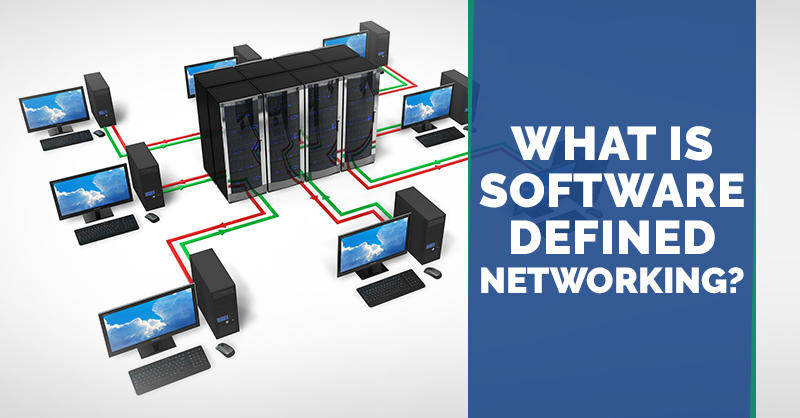
Why Every Business Needs a Mobile App
December 18, 2019
Where vCIOs Fit Into Your Corporate Alignment
February 17, 2020How software defined networking helps secure your organization

The Challenges of 21st-century Networking
Keeping networks fast and secure continues to be one of the hardest challenges that persist in the 21st century. State actors and individual hackers alike continue to leverage vulnerabilities and infiltrate networks where they are at their weakest. Security breaches continue to rise on an upward trajectory, where government and corporate entities alike continue to lag behind when addressing the security needs of their organizations. Over 89% of the breaches that have occurred are usually motivated for financial gain or corporate espionage.
Business demands have strained traditional LANs at capacity, forcing companies to adopt a new solution in order to accommodate the increase in data transactions while simultaneously offering flexibility for corporations to make ends meet. This is where software-defined networking comes into play.
Security, speed, and adaptability remain the chief concerns of security managers and leaders responsible for the day-to-day operation of corporate networks. Since cyber threats show no signs of slowing down any time soon, IT professionals are placed under more pressure to ensure that security needs are met.
Enter Software Defined Networking
Traditionally, legacy MPLS (multprotocol label switching) networks had to relied on hard connections to maintain business functions. As businesses added more applications to the cloud, leadership from multiple organizations realized that MPLS connections were becoming costly, especially when adding in security solutions to keep their networks protected.
The routers that are tied to these networks are not cloud-friendly, making it difficult to move data at will. Traffic requires to be backhauled prior to reaching their destination. This form delay from the backhaul weakens productivity and creates a negative user experience.
Known formally as software-defined networks, they serve as an alternative solution to hardwired network connections. They provide versatility and performance by providing a unity platform that aggregates multiple network connections. These connections are optimized so that you’ll be able to leverage them while steering and directing traffic across the WAN.
Since the introduction of cloud along with applications such as Amazon Web Services, Office365, Salesforce.com and Dropbox, the cloud has fundamentally changed how data is exchanged between corporate headquarters and their branch offices. The SDWAN architecture connects users to network applications in a seamless fashion, regardless if they are hosted within the cloud or in a physical data center.
Instead of relying solely on legacy routers to route traffic through, the focus of SDWAN is to centralize control by directing traffic smartly across the WAN without compromising security. This results in reduced IT hardware costs, improvements in application performance, and increases business productivity.
Making strides in security
VPNs provide some of the most robust security offered for networks. They provide a secure means of protecting data as they transit within networks from one point to another. VPNs were often used as a primary or secondary transport method when it comes to using the internet.
However, when it comes to failover, companies are unable to seamlessly transition due to reliance on fiber transport. In addition, VPNs rely on firewalls deployed at remote locations while also having firewalls in the data center in order to have a VPN in place. Using the software defined architecture eliminates the need to utilize VPNs since IP security is already built-in as part of the SD package. Some of the different types of encryption supported by the package includes the SHA256 and AES256 standards, along with end-to-end encryption and IKEv2 to enhance security.
Security is handled at the controller level, where smart software-defined engines build IPsec tunnels between multiple offices once your SD device is connected. All software-defined WAN products come equipped with their own controllers and creates VPNs automatically for your networks. The minimized footprint helps reduce the amount of traffic that goes through the security checkpoints since all locations are encrypted.
Imagine having to send gigs upon gigs of data from one office to another, only to find that performance declines due to the hard limitations of VPNs. Firewalls are also limited since they are security appliances that is based on utilization and throughput. Software-defined WAN products eliminate this issue ensuring seamless communication across all locations. Security is also scalable, allowing you to fortify the weakest areas of your network.
What are the other benefits of software defined networking?
Software-defined WAN products provides security either separately or as part of an integrated solution, available as a virtual or physical appliance on-premise or housed within the cloud. In addition, this new architecture provides the following benefits:
– Massive cost savings
– Cut down MPLS utilization
– Minimize hardware footprint
– Improved network agility and flexibility
In addition, they provide the following:
ZTP – Utilizing zero-touch provisioning, policies and configurations are universally applied across the headquarters and satellite offices, negating the need to use a command-line interface to configure each location individually. Time and resources are saved while simultaneously reducing human error, enabling consistency within the enterprise.
Centralization – Enterprise management is handled via advanced software that handles application performance and configurations.

Conclusion: The future of networking and security
The SDWAN architecture is designed to continually adapt to the needs of the enterprise and maintain performance. It utilizes automation and optimization features intelligently to set up your networks within days instead of months, allowing your enterprise to rapidly expand with ease. They make configuration management for networks easier due to the inclusion of controllers with software-defined WAN products. Cost reduction, improved network performance, and improved security features allow employees to enjoy the benefits of the boosted performance of their applications.
Leadership will need to weigh the costs and the risks to make the transition from MPLS networks to software-defined WANs. While the responsibility of protecting data falls on the IT security professionals, it will ultimately be incumbent upon leaders to determine what their security needs will be prior to using software-defined solutions.
For those that are skeptical or unsure about the new types of security that software-defined WAN products provide, understand that they are perfectly safe to employ to keep your data safe and business running as usual.
Get in touch with our team to learn more about how we can help determine how software defined networking fits into your organization’s cybersecurity plan.
